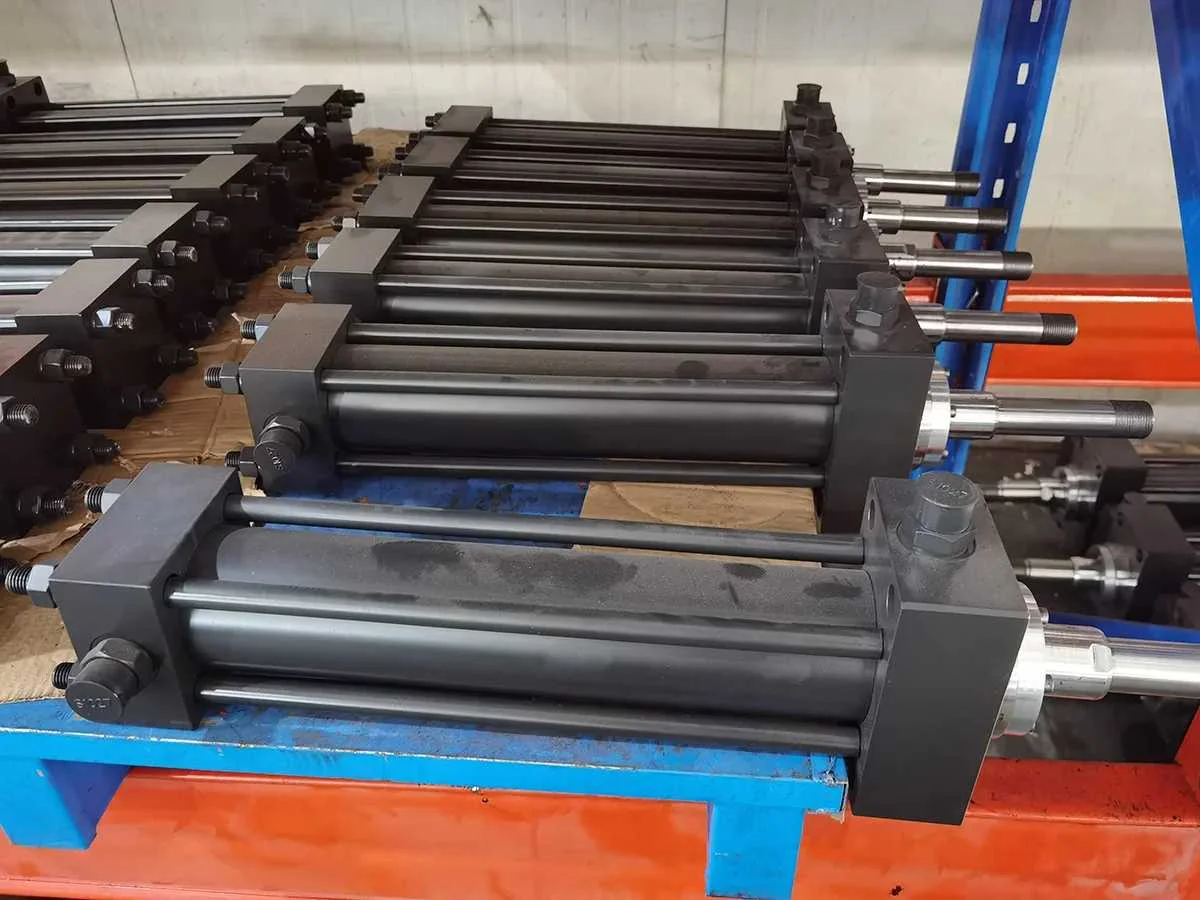In modern industrial fields, the operating efficiency and stability of mechanical equipment are crucial. As an important part of the mechanical transmission system, tie rod cylinder plays an indispensable role in industrial applications. This article will delve into the definition, structure, and working principle of tie rod cylinders and their important role in industrial applications.
Part 1: Definition and structure of tie rod cylinder
A tie rod cylinder is a common pneumatic or hydraulic actuator that consists of multiple tie rods connected together. It usually consists of components such as cylinder barrels, pistons, piston rods, seals, connecting rods, and connecting bolts. This structure enables tie rod cylinders to produce linear motion in industrial equipment and transmit force to the desired location.

Part 2: How to tie rod cylinder works
The working principle of a tie rod cylinder is based on the mechanical principle of hydraulic or pneumatic pressure. When hydraulic or pneumatic pressure passes through the air inlet or hydraulic port entering the cylinder barrel, the piston will be affected by the pressure and move forward or backward. This movement is transmitted to the connecting rod through the piston rod, thereby realizing the movement of the mechanical equipment. By controlling the inlet and outlet of hydraulic or pneumatic pressure, the tie rod cylinder can achieve forward, reverse, or stop motion.
Part 3: The role of tie rod cylinder in industrial applications
1. Power transmission: A tie rod cylinder can convert hydraulic or pneumatic energy into mechanical energy, thereby realizing the movement of mechanical equipment. It is widely used in various industrial fields, such as automobile manufacturing, machining, aerospace, etc.
2. Load carrying capacity: A tie rod cylinder can withstand larger loads, making it widely used in heavy machinery and equipment. It can adapt to different load requirements by adjusting the hydraulic or pneumatic pressure.
3. Precise control: The tie rod cylinder has precise motion control capabilities and can achieve high-precision position control and speed control. This makes it widely used in industrial applications that require precise positioning and motion control, such as machine tools, automated production lines, etc.
4. Long life and reliability: The structural design of the tie rod cylinder gives it a long service life and high reliability. It uses high-quality seals and materials to operate normally in harsh working environments and reduce the frequency of maintenance and replacement.
As a source of strength in the industrial world, tie rod cylinders play an important role in modern industrial applications. It realizes the movement of mechanical equipment by converting hydraulic or pneumatic energy into mechanical energy and has the advantages of load-carrying capacity, precise control, long life, and reliability. With the continuous development of industrial technology, tie rod cylinders will continue to play an important role in various fields and promote the progress and development of industrial production.
https://www.toringcylinder.com/Tie-Rod-Cylinder-the-backbone-of-industrial-applications.html